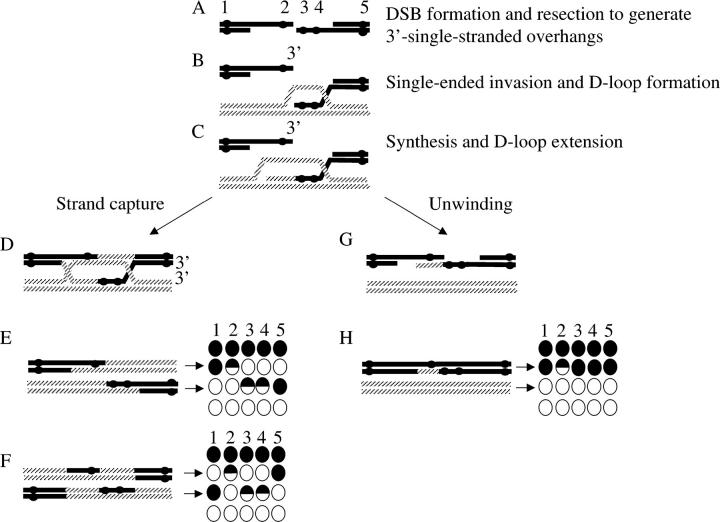Figure 1.—
A modified double-strand break repair model and a synthesis-dependent single-strand annealing (SDSA) for recombination. Five markers, labeled 1–5 and spanning the DSB, are shown as solid circles. These correspond to HPH, BIK1-939, his4-ATC, HIS4-1605, and NAT, as illustrated in Figure 3. Markers 2, 3, and 4 are included in heteroduplex DNA and are left unrepaired so that the origin of the DNA strands is clear. Markers 1 and 5 are flanking markers used to assess crossovers. For simplicity, only the two interacting chromatids are shown. (A) DSB formation and subsequent resection initiates meiotic recombination and generates 3′-single-stranded overhangs. (B) Invasion of the intact homologous chromosome by only one of the 3′-single-stranded overhang generates a D-loop. This is the first stage during which heteroduplex DNA may be formed. Synthesis (C) and subsequent capture of the D-loop by the second end lead to formation of the joint molecule (double Holliday junction; D). Double Holliday junctions may give rise to crossovers (E and F). The resulting tetrads are shown to the right. The spores arising from the interacting DNA molecules are indicated by arrows. The parental chromatids are shown above (all markers solid) and below (all markers open). Markers are as given in A. (G) The D-loop, shown in C, may also be disassembled, leading to SDSA. In the absence of heteroduplex repair, SDSA will generate a one-sided event (marker 2) that will not be associated with a crossover.

